In this article, I will explore the average curtain length and discuss whether you should opt for long or short curtains based on the style you are going for.
When choosing the perfect curtains for your space, the length of the curtains can greatly impact the overall look and feel of the room.
Choosing between long or short curtains is not just about aesthetics but also functionality and practicality.
Is there a “right” option for curtain lengths?
That depends on who you ask, and often, just asking the question can leave you more confused than you were before. The long and short of it is (no pun intended): it’s up to you.
But we’re here to help as you answer the question, “How long should curtains be?” We’ll be taking a critical look at curtain lengths, tall and small. What side are you on?
Understanding the Basics of Curtain Length
Let’s get into the nitty-gritty of what constitutes the average curtain length.
Typically, curtains come in lengths from 63 inches, which just skim the window frame ledge, to a dramatic 144 inches, with an elegant puddle on the floor.
However, the sweet spots that most homeowners gravitate towards are the 84-inch and 96-inch lengths. These sizes offer enough versatility to suit a range of window heights and room styles without overwhelming the space.
In my experience, choosing the right length isn’t just a matter of measuring from the curtain rod to the floor. It’s about understanding the effect you want to achieve in the room.
Do you want the space to feel more intimate and grounded or an airy, more expansive feel?
The length of your curtains can significantly impact this.
For example, opting for the longer 96-inch curtains can enhance a room’s height, making the ceiling seem higher than it is, whereas the 63-inch or 84-inch options can help create a more cozy, contained atmosphere.
It’s fascinating how something as simple as the length of your curtains can transform the feel of a room, and it’s a testament to the power of thoughtful interior design.
Curtain Lengths Overview:
Floor Length Curtains
Let’s start with what’s probably the most common curtain length: to the floor. These are the standard curtain lengths for hanging curtains—either hitting the floor exactly or hovering a half inch off the ground.
Sheer white curtains hung like the ones above (from Little Green Notebook), and the ones below (via A Cup of Jo) are both modern and classic.
The curtain lengths make the ceilings seem taller and the room more polished, maybe even a bit formal.
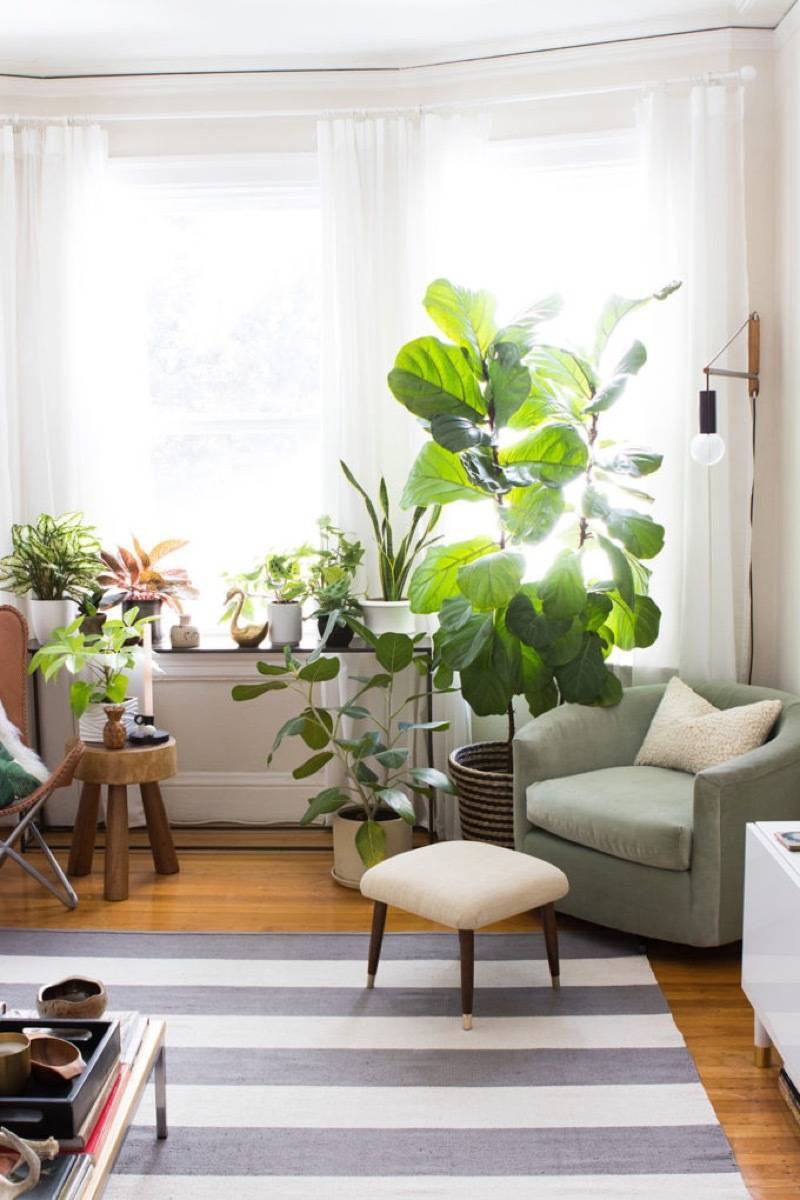
Cons to floor length?
They may make your room look too formal for your liking.
Dust will inevitably collect around the bottoms.
Also, children may be more likely to grab them and use them as a climbing rope.
If you’re asking yourself, “Should curtains go to the floor?,” and kids, pets, and dust aren’t a concern, then floor-length is probably your best bet.
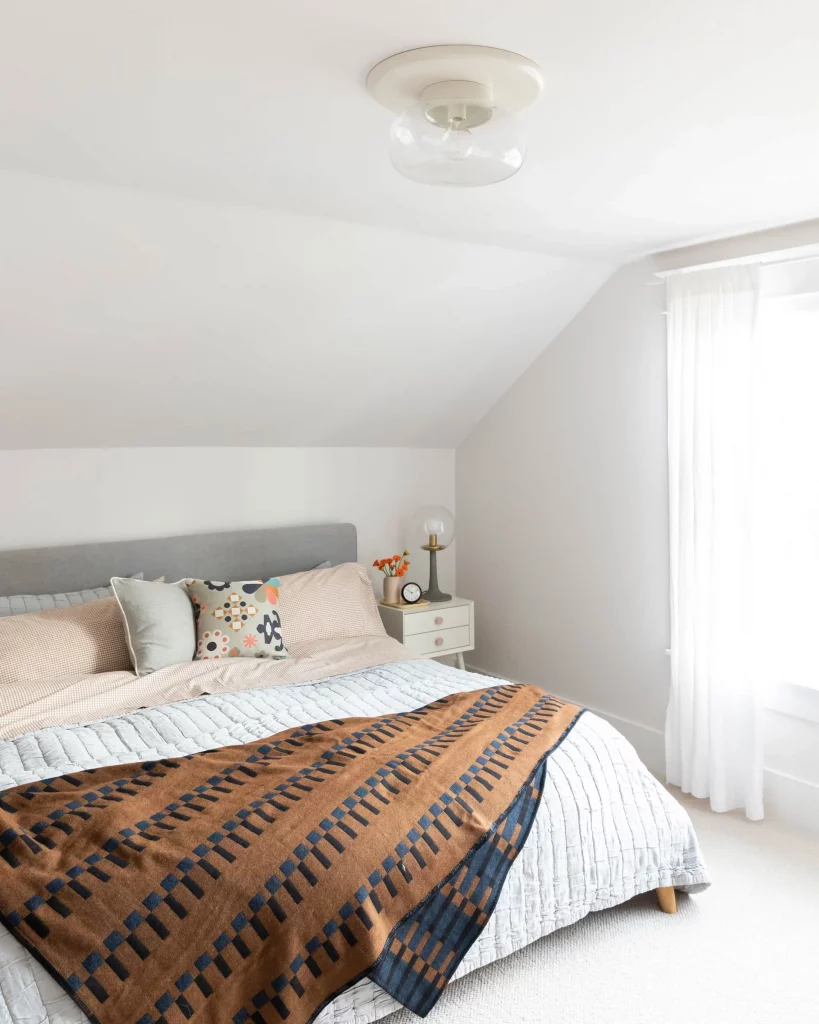
Floor-to-Ceiling Length Curtains
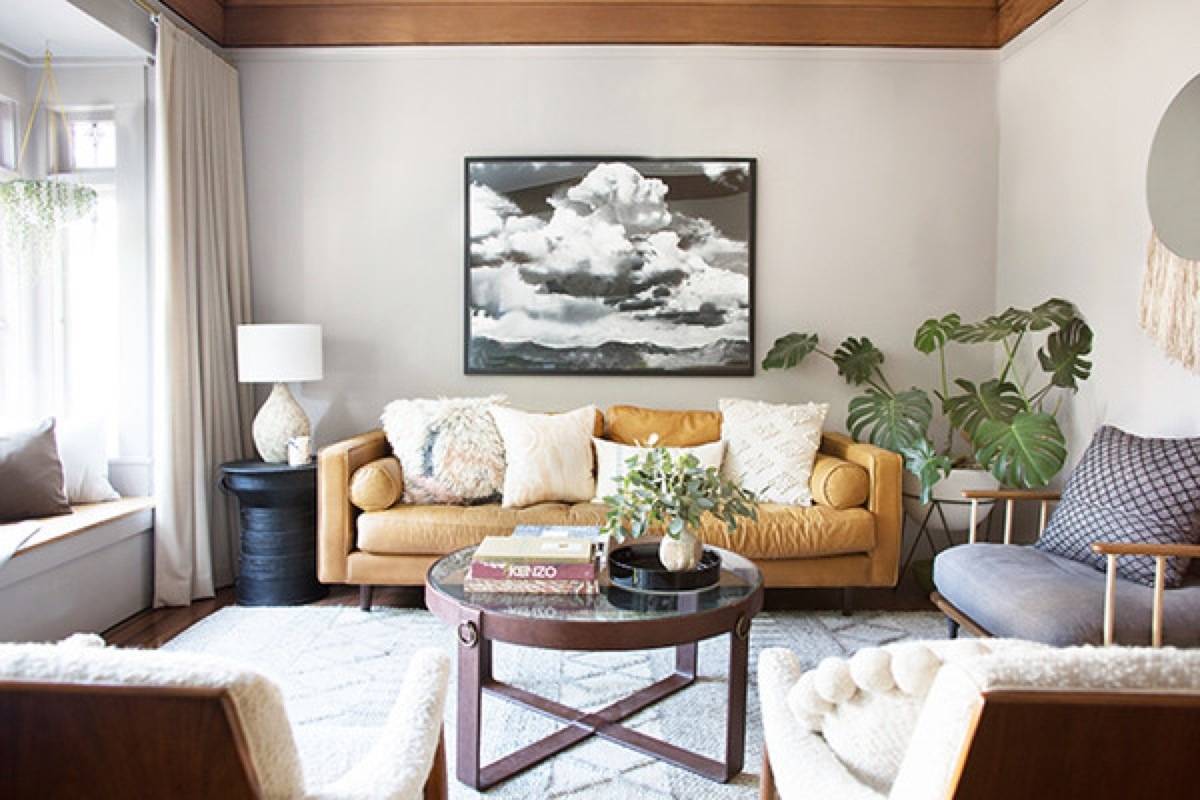
You may have heard that hanging your curtains from the ceiling will make your living space appear taller.
But how?
Visually, your eye tends to follow lines.
Whether it’s the double yellow line on the highway or the walkway to your front door, your eye is drawn toward (and up) pathways.
By hanging your curtains from the highest point on the wall, your eye travels up the line, causing you to notice that there is height in the space you are standing in.
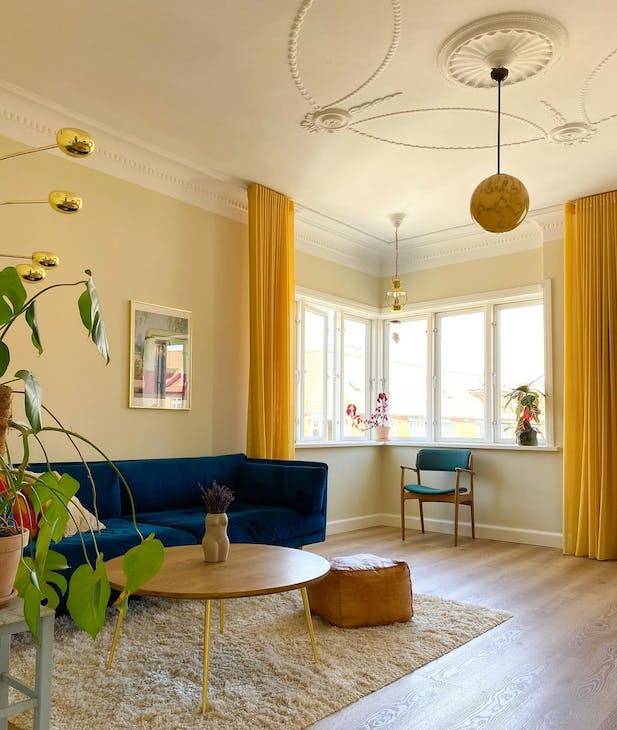
If your living space has high ceilings already, compliment them with tall curtain lengths.
Floor-to-ceiling curtains can also help to divide space, whether you’re tucking away a window seat (like the floor-to-ceiling curtains above) or cutting a whole room in half.
Heads up: The worst thing you can do when hanging curtains from the ceiling is to hang them too short.
The heightening trick-of-the-eye doesn’t work well if the curtain line abruptly cuts off before it hits the ground.
Short Curtains
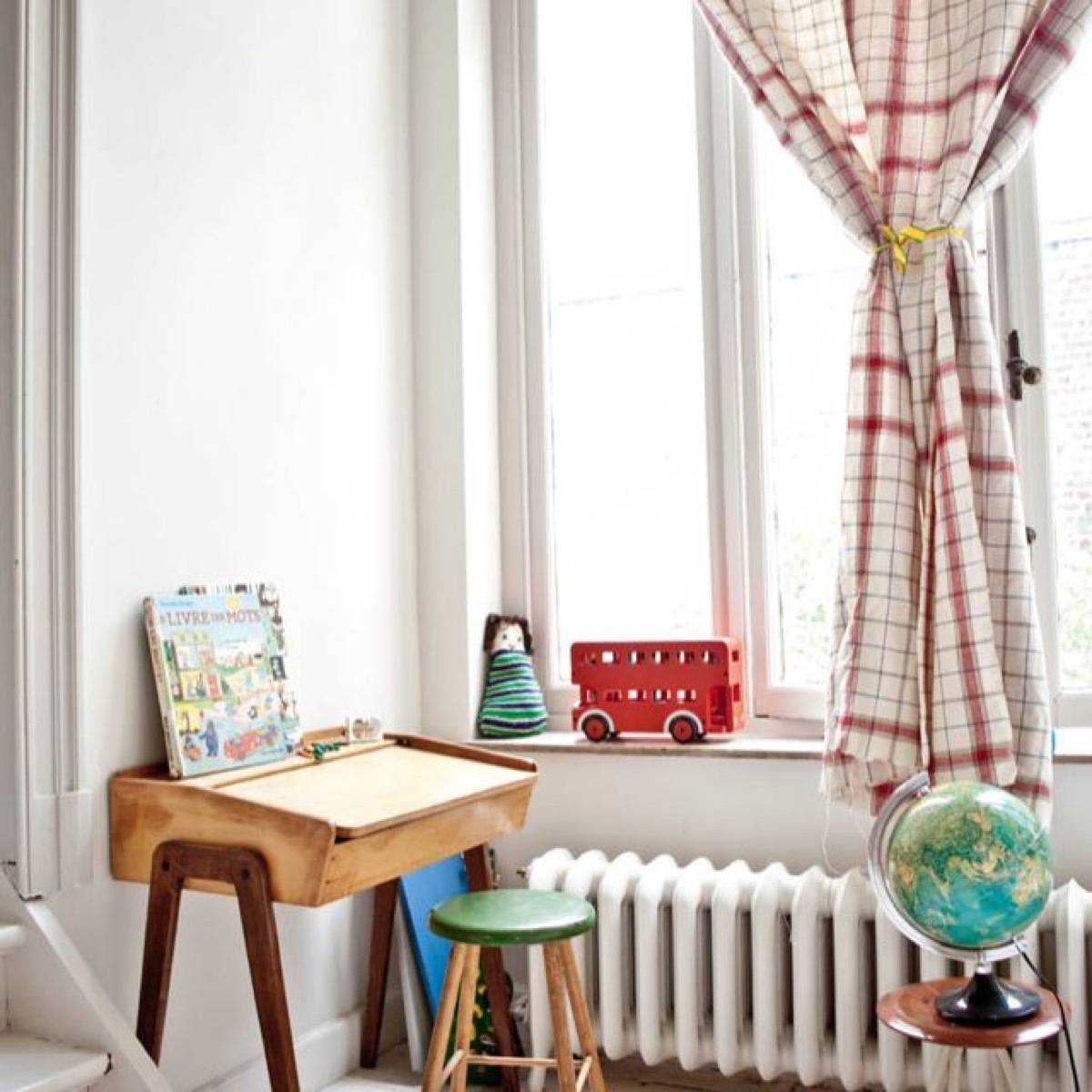
Then there’s the other end of the curtain length spectrum: short curtains.
Visually speaking, high-water style is not the most appealing way to hang curtains.
The shorter length can appear dated.
Also, it can cut the visual height of your room in half.
However, short curtains are sometimes the best option from a purely practical standpoint. Many parents choose shorter curtains for their kids’ rooms, probably to avoid the whole Tarzan situation or just to limit sticky fingers from touching the window treatments.
You may also be forced to hang short curtains in the presence of heat-producing radiators or heaters.
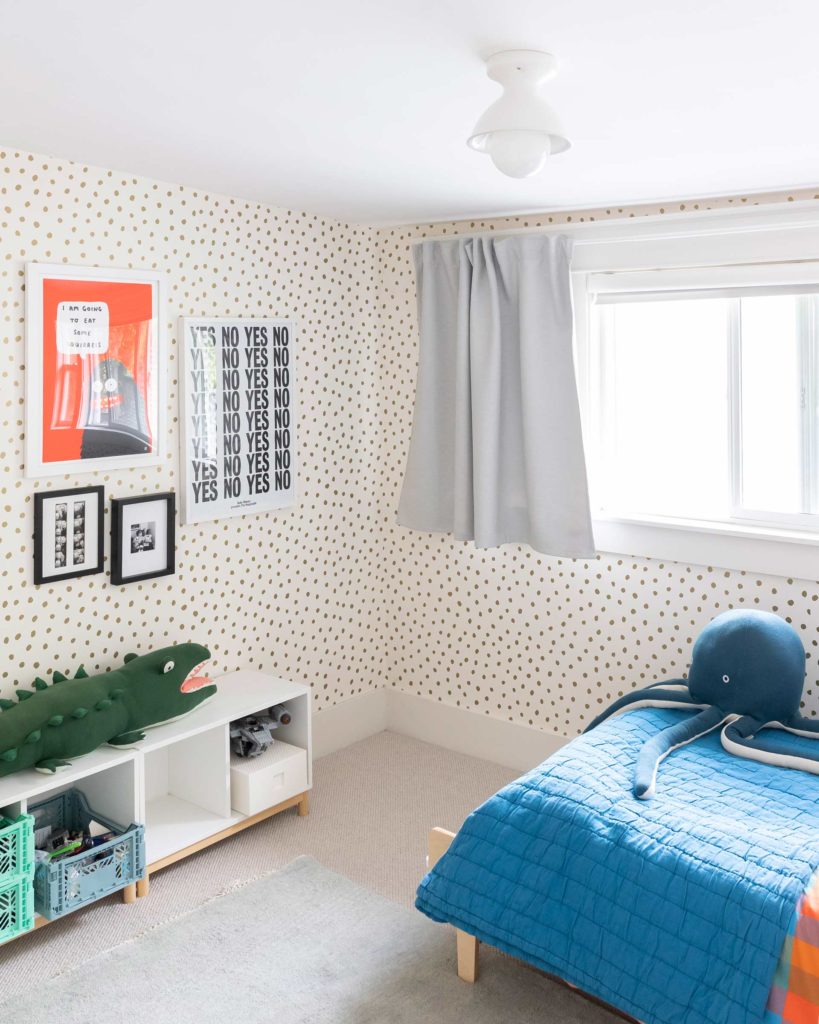
If you hang short curtains, aim to hit a perpendicular mark on the wall.
For instance, the curtain lengths should meet at the top of the baseboard or the bottom of the windowsill.
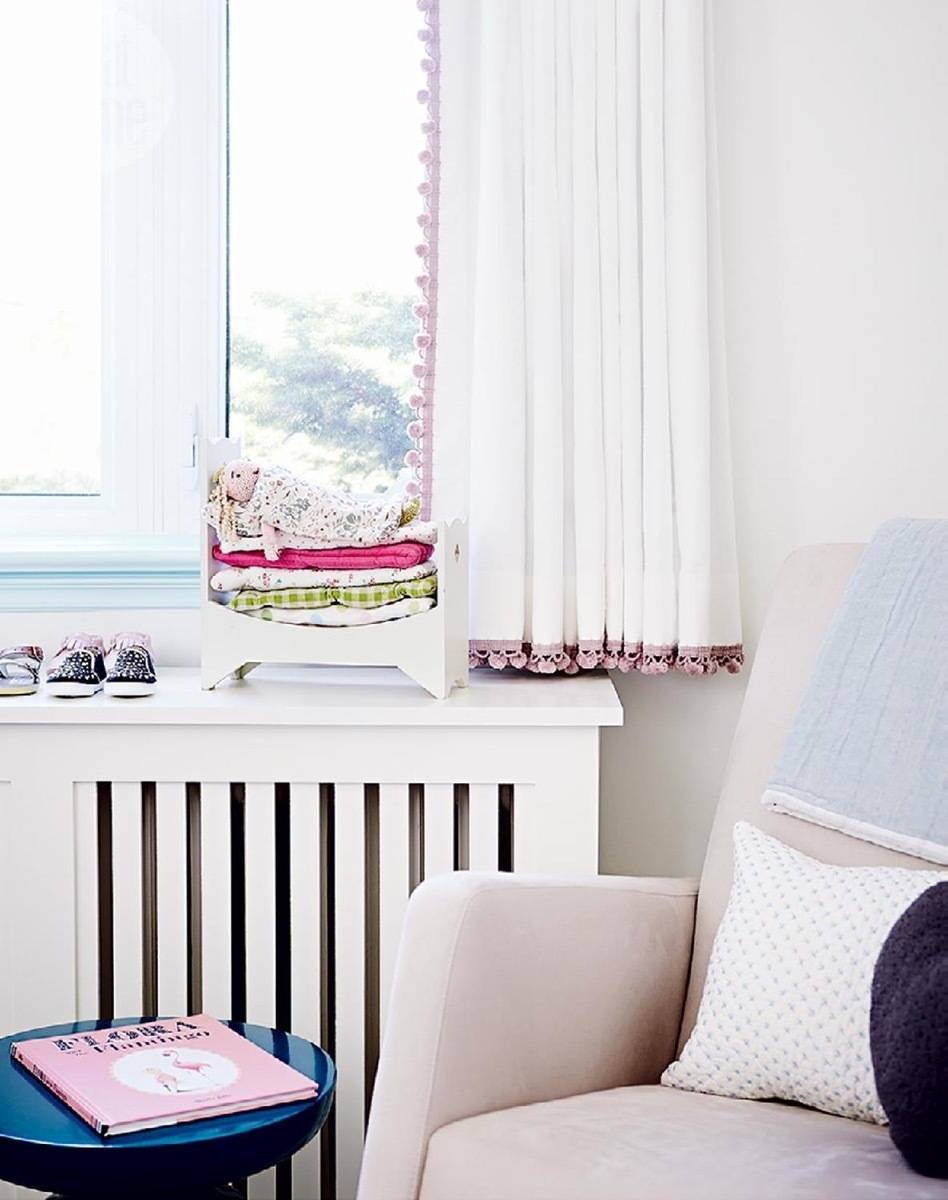
Café Length Curtains
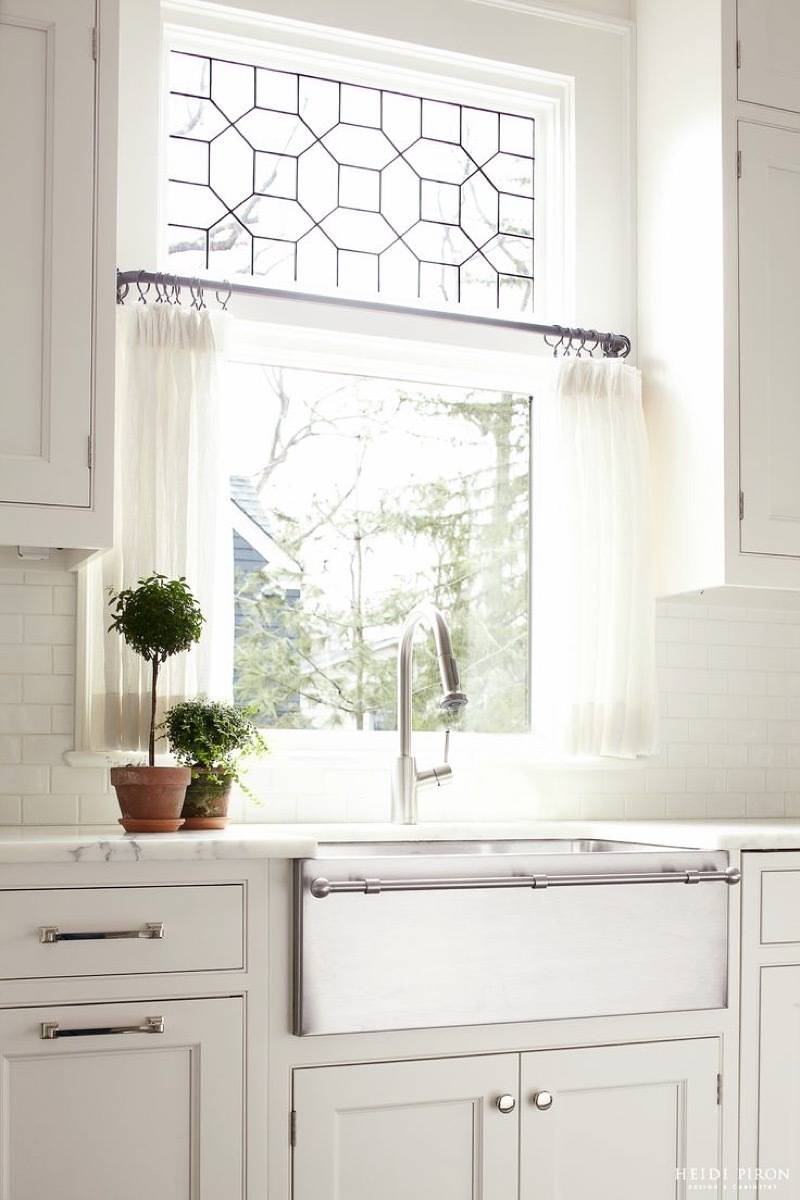
Café curtains are fairly common where there’s a window sill over, say, a sink in a kitchen.
Or, in their namesake, cafés, where you wouldn’t want curtains dragging the floor of such a busy, public place.
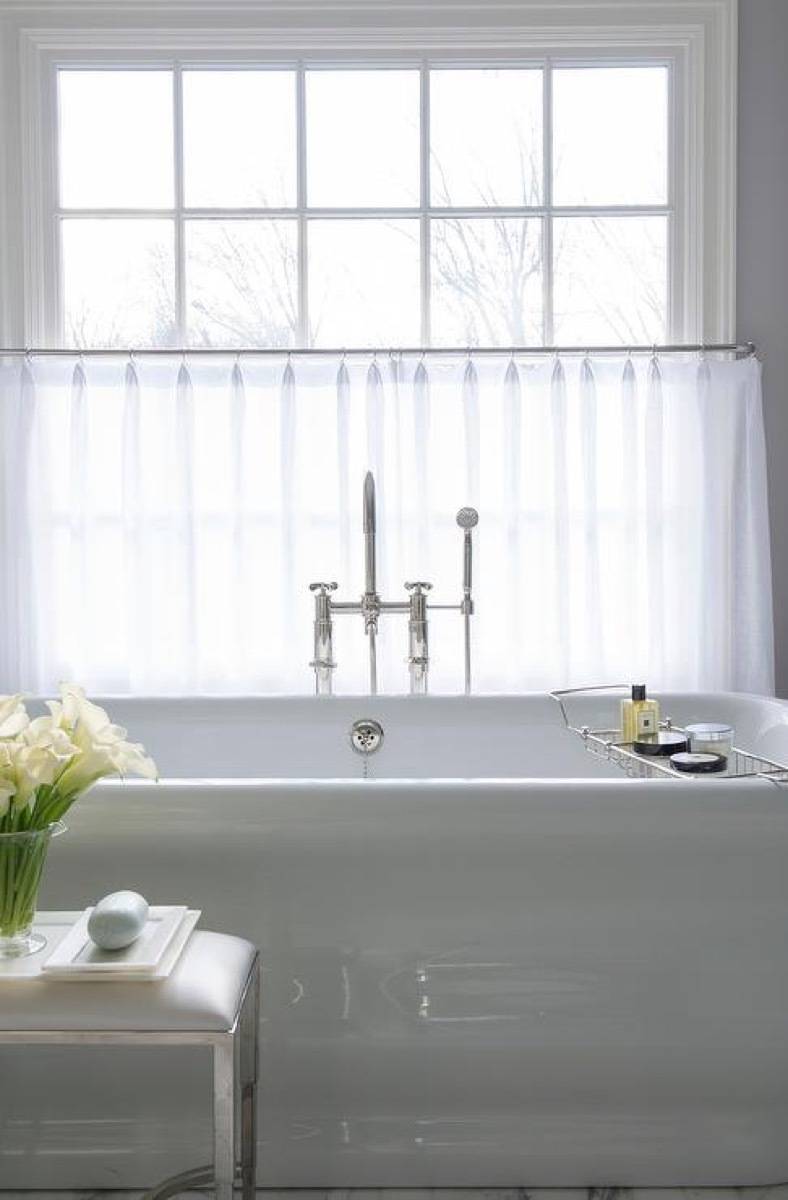
Café curtains are usually hung at the halfway point of a window or on the bottom pane of a two-part window.
They’re great for when you need a bit of privacy (like in this bathroom pictured above) but don’t necessarily want to block out all the natural light coming through the window.
Because café curtains are short and cute, they can give a room a more casual vibe.
Breaking at the Floor
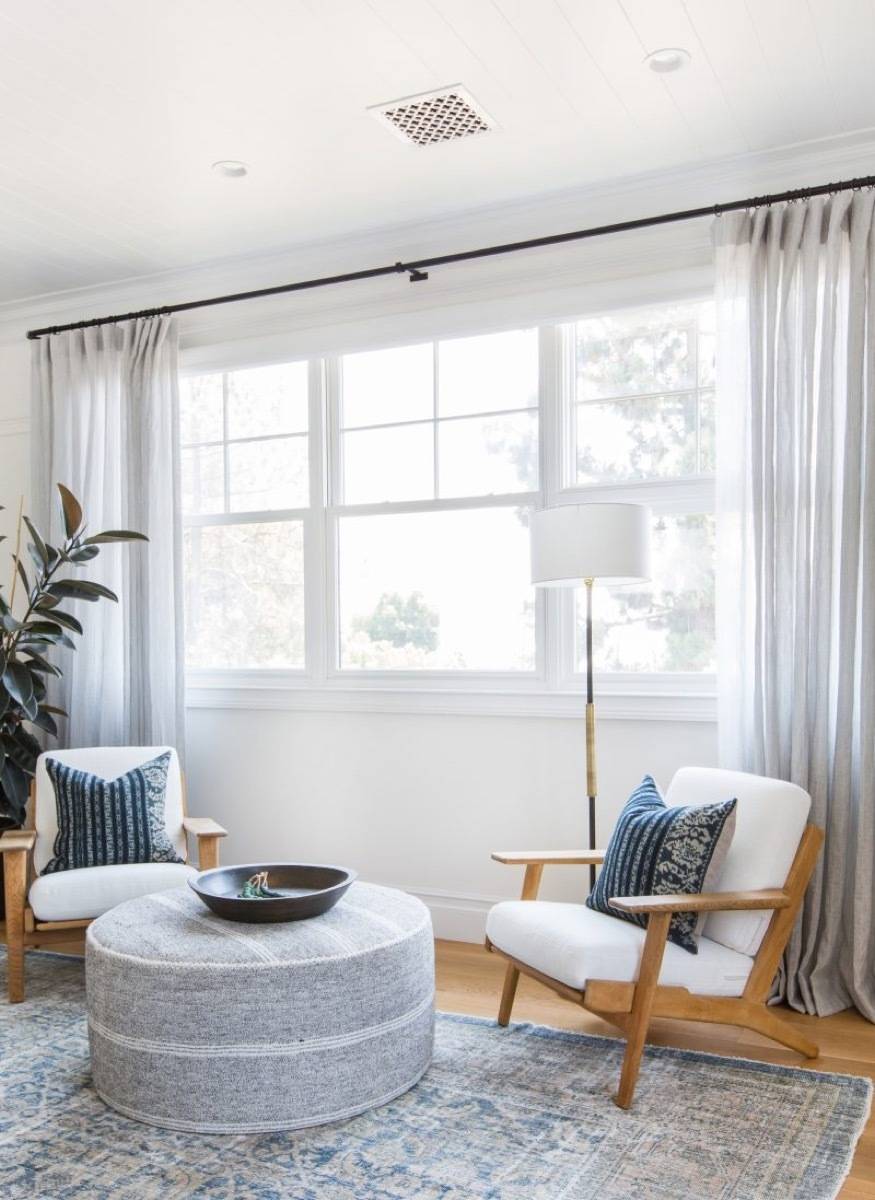
We’ve discussed short curtains and curtains that hit the floor perfectly.
What curtain lengths are left? Long curtains.
The more billowy a curtain becomes as it breaks at the floor, the more dramatic it will look.
A simple “kiss” to the ground, like the curtains pictured above (via Amber Interiors), adds a touch of flair to this otherwise simple window treatment.
This option is similar in style to floor length but will require more care – dust bunnies like to live in the folds of the billowing curtains!
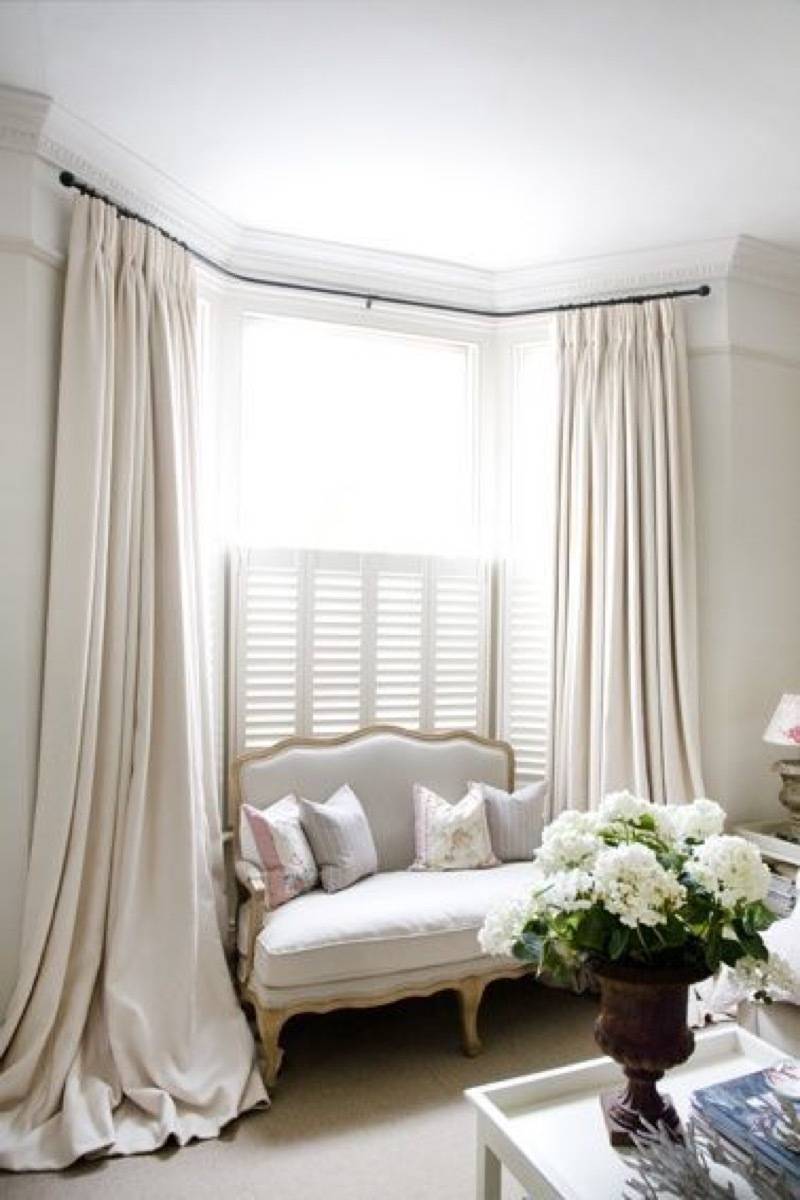
Last, there’s the most extreme curtain length: puddled.
This is a typical French look (think the Rococo period) and is most successful with high ceilings and, usually, expensive fabric.
Silks or velvet are typically going to billow the best, being both lightweight and natural fibers.
Obviously, this look adds a lot of glam to even the simplest decor. But you really need the right architecture to pull it off.
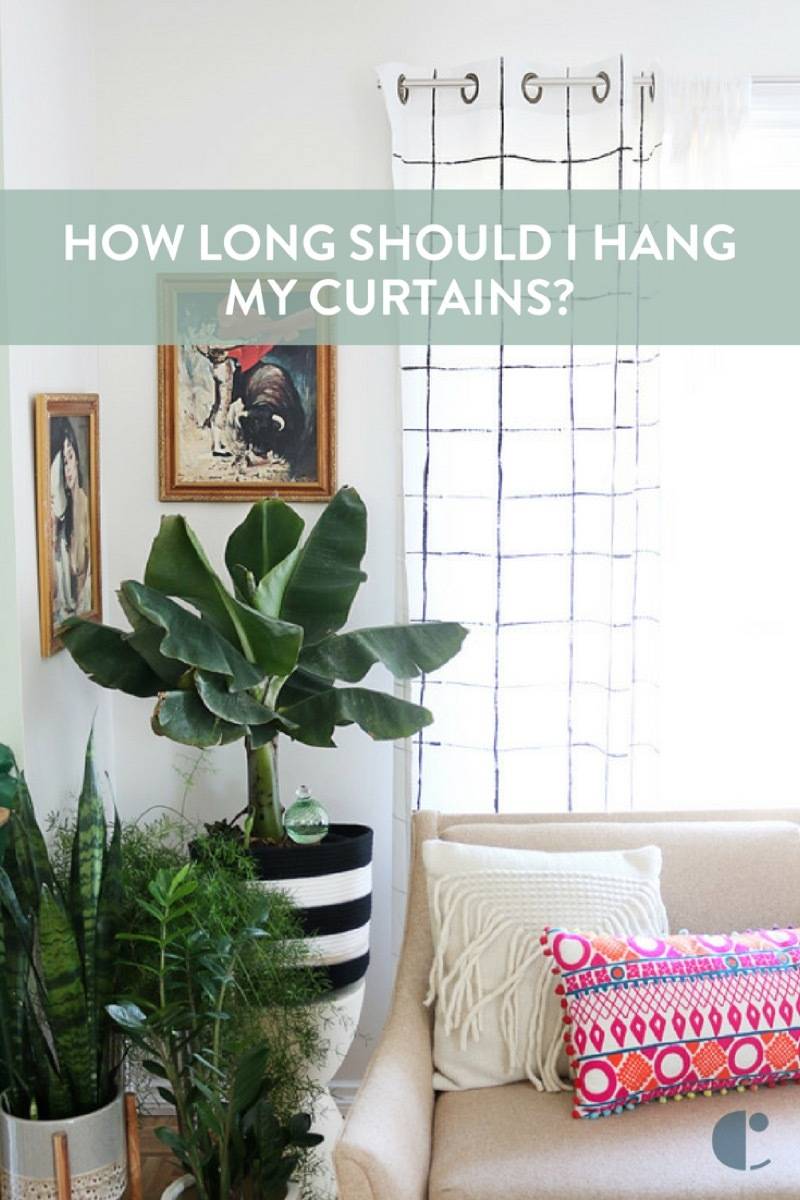
So, how long should curtains be?
The answer is up to you, your style, and your needs.
The Case for Long Curtains
Long curtains hold a special place in creating interiors that exude elegance and sophistication.
Imagine walking into a living room where the curtains cascade gracefully to the floor – it’s an immediate signal of luxury and attention to detail.
For me, long curtains are not just decorative elements; they are transformative. They have the unique ability to make ceilings appear higher, adding a visual lift to the room that can be breathtaking.
Utilizing long curtains can also significantly affect how light filters into a room, offering a soft, diffused glow that can change the entire ambiance.
Moreover, the fluidity of long curtains introduces a sense of movement and depth, creating dynamic spaces that feel alive and inviting.
Opting for long curtains is a choice that tends toward creating spaces that feel grand and intimately connected to the nuances of light and space.
Embracing the Charm of Short Curtains
There is a distinct beauty in the use of short curtains that cannot be overlooked.
They bring a unique flair to a room, offering a casual yet stylish ambiance that long curtains sometimes can’t achieve.
I’ve seen short curtains work wonders in spaces where the vibe is meant to be unfussy and welcoming—think of a sunlit kitchen with linen curtains, where every morning feels like the beginning of something wonderful or a cozy reading nook that invites you to curl up with a good book.
Shorter lengths have a way of making these spaces feel more accessible and lived-in.
Short curtains are particularly suited for areas where long drapes might seem too bulky or out of place, like a bustling kitchen or a compact bathroom where simplicity is key.
Moreover, they can be a savvy choice for showcasing beautiful window trim or when you have a radiator, a deep sill for plants, or furniture that would conflict with longer curtains.
In these instances, the charm of short curtains shines through. They blend functionality with a laid-back style that can instantly make a room feel more inviting and homely.
Making the Decision: Style Versus Practicality
Choosing between long or short curtains has always felt to me like deciding between two distinct fashion statements for your home.
It’s a reflection of your personal style intertwined with the practical needs of your space.
In my own journey of decorating, I’ve realized that this choice isn’t just black and white. It’s about finding a balance that speaks to you.
Long curtains were my go-to for those spaces where I dreamt of injecting a touch of drama and sophistication. They added an undeniable elegance that felt right for the setting.
On the other hand, in areas where daily activities buzzed with energy, like in the kitchen or a child’s playroom, I leaned towards short curtains for their practicality and ease of maintenance.
My advice?
Consider the room’s function and your desired ambiance.
Ask yourself if the space calls for the sweeping elegance of long curtains or the approachable charm of short ones. It’s about marrying the practical aspects of your life with the stylistic expressions of your personality.
This harmony between style and practicality has guided me through many decorating dilemmas, leading to beautifully designed, wonderfully livable spaces.
Tips for Customizing Your Curtain Length
When it comes to choosing the perfect curtain length for each room, I’ve discovered a few strategies that might help you tailor your choices to your unique spaces.
Personally, I love using floor-length curtains to infuse a room with a sense of formality and elegance.
For a more relaxed vibe, curtains that just kiss or hover an inch above the window sill have never failed me.
It’s fascinating to experiment with these lengths in various rooms and observe how they influence the rooms’ character.
Mixing long and short curtains within your home isn’t just allowed; it’s encouraged to forge a distinct and personalized aesthetic.
Remember, experimenting is key to unlocking the perfect curtain length that harmonizes with your style and your living space’s usefulness.
So, what are the best curtain lengths for your space? Are you Team Shortie? Puddler? Somewhere in between? Leave us a comment and let us know!


